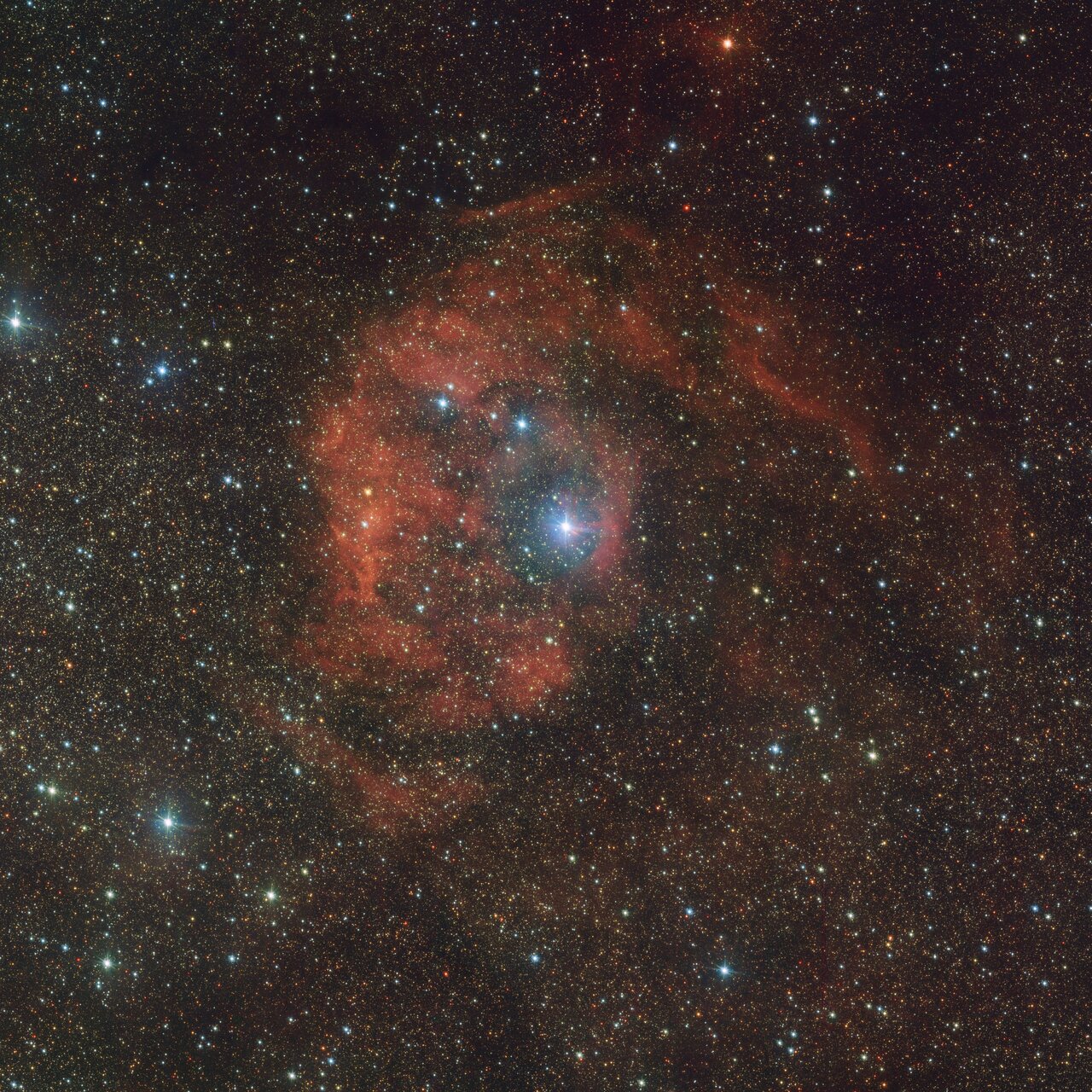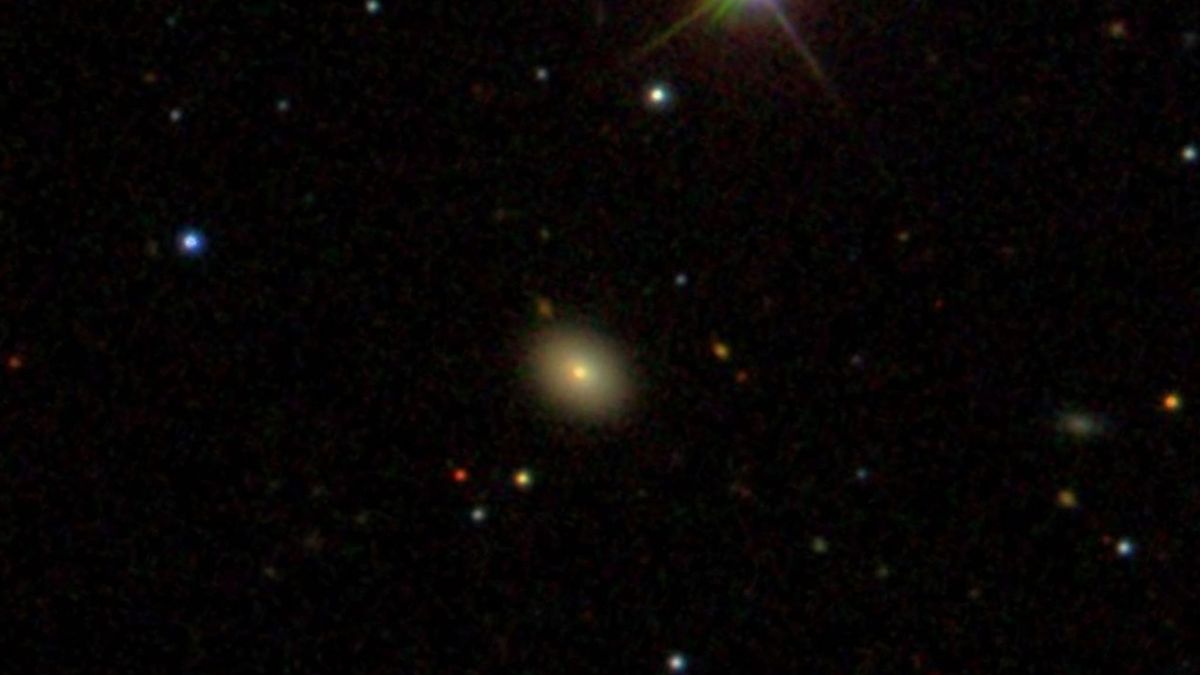A dazzling new image from the European Southern Observatory's VLT Survey Telescope in Chile has revealed an unusual cosmic tale unfolding 6,000 light-years away in the Serpens constellation.
The snapshot features the vivid red nebula Sh2-46 — also known as Gum 80 — lit up in a fiery hue due to intense radiation coming from a brilliant blue-white star nestled at its heart. The stellar behemoth is among the rarest and most luminous stars in the universe, wielding significant influence over its surroundings. Despite its dominant presence, astronomers believe this stunning centerpiece is actually a cosmic interloper — a runaway star that may have originated in a nearby stellar nursery.
"This star should not be here," a statement from the European Southern Observatory reads. "In space, not everything is what it seems."

The clue to the central star's nomadic past comes in the form of a distinct bow shock observed adjacent to the star — a telltale sign the star is plowing through the nebula, compressing gas and dust into the visible arc, not unlike the wake of a ship moving through water.
Astronomers suspect the star, called HD 165319, was once part of a young cluster in the nearby Eagle Nebula, a bustling star-forming region best known for the iconic "Pillars of Creation."
Astronomers have observed dozens of similar bow shocks across the Milky Way, often associated with so-called runaway stars. Those observations have suggested that in dense, young star clusters, complex gravitational interactions — particularly close encounters between three or more stars — can propel some stars with enough velocity to force them out of their natal homes and into nearby space.
These stellar exiles can travel across space for eons before ending up infiltrating unrelated nebulas like Sh2-46, according to the statement.
Although HD 165319 currently dominates the appearance of Sh2-46, its presence may be fleeting. If the star continues on this trajectory, it may eventually exit the nebula, potentially altering the region's shape and brightness.
"Perhaps this nebula will end up looking differently if the star ends up leaving it behind," the statement reads.
.png)
 German (DE)
German (DE)  English (US)
English (US)  Spanish (ES)
Spanish (ES)  French (FR)
French (FR)  Hindi (IN)
Hindi (IN)  Italian (IT)
Italian (IT)  Russian (RU)
Russian (RU) 







Comments